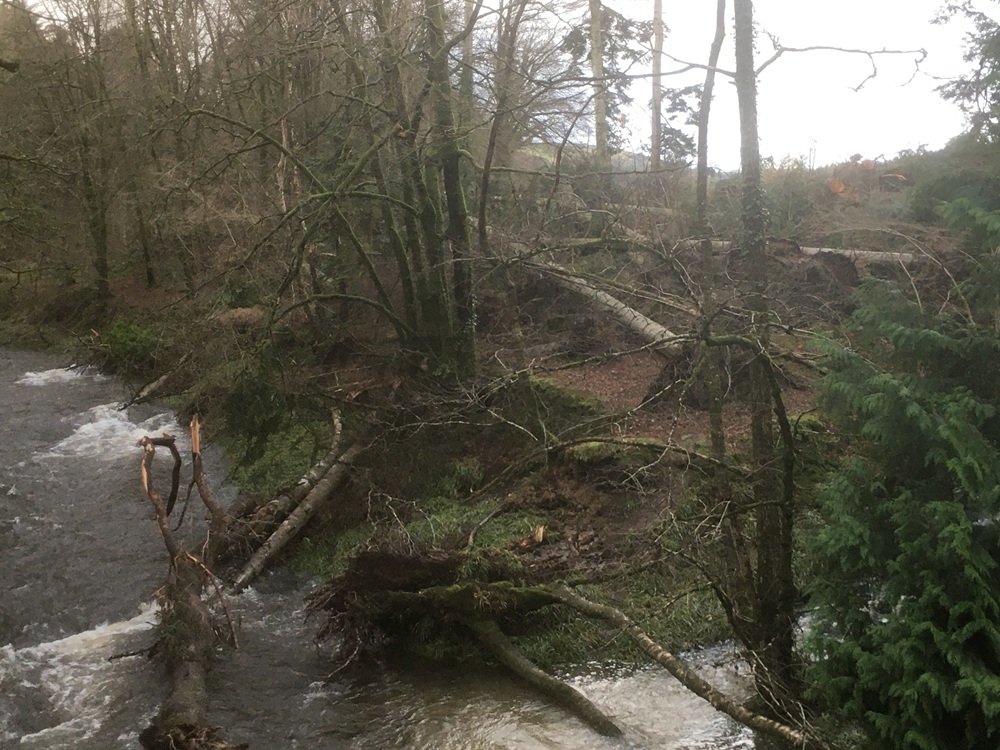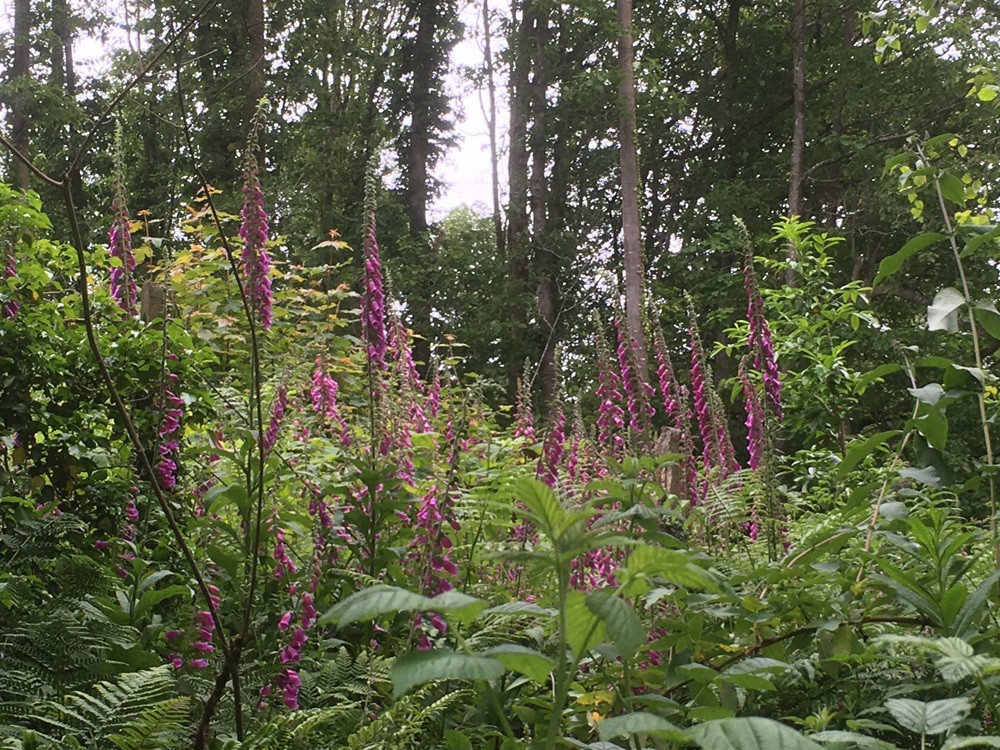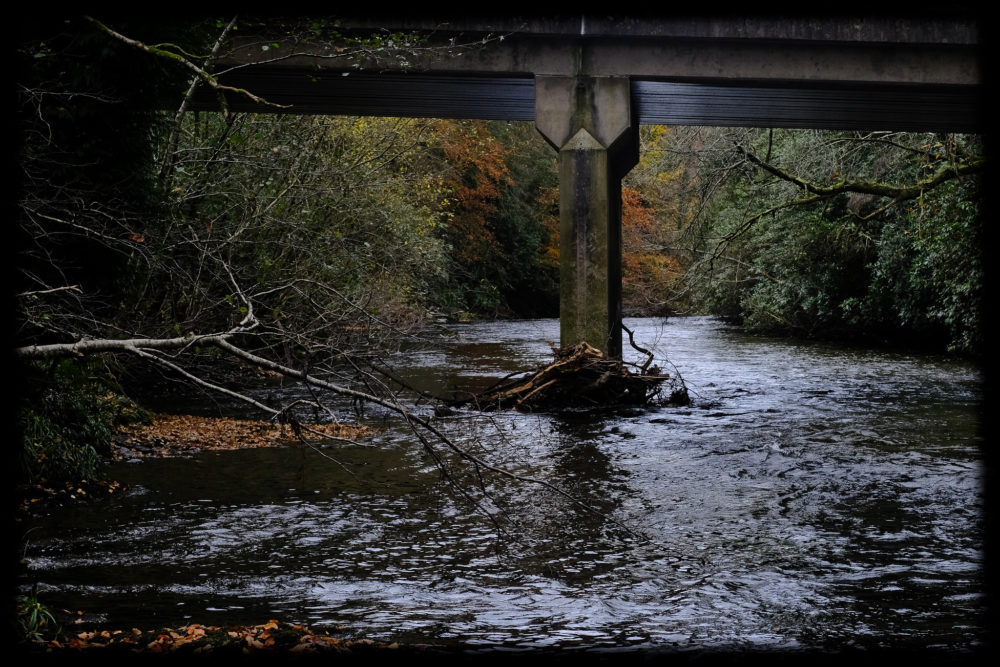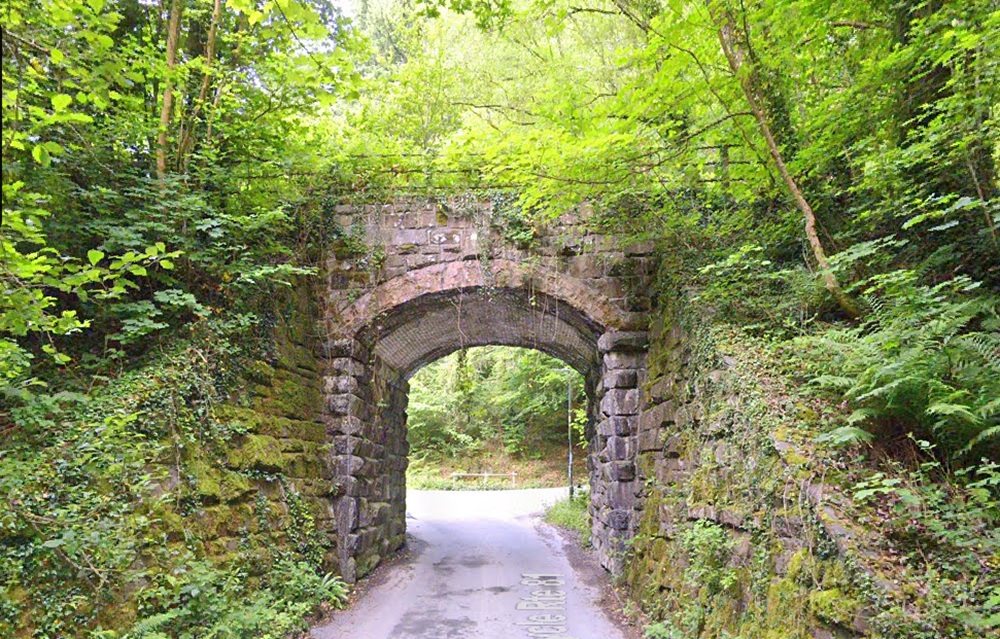Letter From Trawsgoed

Anthony Burgess
Trawsgoed is the centre of my world and has been for fifty years since I moved all the nine miles east from Aberystwyth.
Trawsgoed is normally an area of verdancy and bird song as it is amicably surrounded and protected by spectacular mixed varieties of trees which any arborist would consider truly magnificent. Sadly, since Storm Darragh a few weeks ago many fine specimen trees succumbed to the relentless bansheesque wind.
Fortunately, the towering sequoias that oversee the woodland were undamaged. These sequoias appear to arrange all other trees below them into a strict pattern dictated by their sun loving preferences.
Foxgloves
Hopefully this spring the floor of the woodlands will still be carpeted by bluebells, wood anemones, ‘secret’ patches of wild garlic, rose campion and enchanters’ nightshade.
Similarly, as summer progresses with all the new swathes of sunlight that now have free reign access to these vast new gaps in the canopy, even more statuesque foxgloves, willow herb, false nettle, beech, and oak fern will abound.

It may be slightly more difficult in Autumn though to forage for the fungi that has long be found here.
The woodlands in Trawsgoed have been a haven for chicken of the wood, chanterelles, and the much-prized boletus cep or porcini. Many years ago, there even used to be a magic mushroom festival here at Gro Gwinion but let us move on swiftly from that.
There is a rather romantic theory that many of the specimen conifers growing here were brought back from their more exotic native homes to the many large estates around Aberystwyth by the brigantine and schooner captains upon their return from half way around the world after discharging their cargos of lead ore, wool, and timber.
In the spring, the road through Trawsgoed is lined by the controversial shrub rhododendron ponticum but I challenge anyone not to be impressed by its gesturing fists of ‘bruise red’ flowers defiantly bursting out of the woodland like fearless sparring partners challenging all that disparage them.
River Ystwyth
Trawsgoed straddles the river Ystwyth whose banks here are lined with willow and alders. The alder being the favourite tree of traditional Welsh clog makers.
Sadly, the invasive Sitka spruce is making inroads and competing very successfully with our native river bank trees. I purposely cut one of these as a Christmas tree each year in a personal effort to reduce their numbers.
The Ystwyth, after many patient years of suffering from pollution emanating from the lead mining waste up stream is currently a much healthier river. Which I sincerely hope it remains with the ever-increasing environmental and agricultural pressures being placed upon the entirety of its course.
The Ystwyth sees sewin run again as do the occasional salmon, there is even a population of brown trout.
Llanilar angling club some years ago had a stock reintroduction programme which appears to be have been successful.

We now have a semi resident cormorant that gorges itself on parr, minnows, frogs, and the occasional eel. It is so successful a fisherman that it must perch on the path alongside the river until it has digested its meal and is able to ‘lift off’ again.
My bemused dogs have long learnt to give it a wide berth.
Often on a summers night when one’s senses are operating at maximum you can hear the rusty bike wheel squeaking of the otters. These have a summer holt in the river bank alongside Trawsgoed pool.
Sometimes in the mornings hundreds of mirrored silver fish scales adorn the grass banks where the otter’s midnight feasts took place.
The river banks along the length of The Ystwyth are under huge threat from the invasive species of Himalayan Balsam and Japanese knotweed.
One small consolation from the balsam is that the flowers are hugely attractive to pollinators including my bees. I always know when they have been foraging on balsam as on their return, they are smothered in its white pollen which gives them a ghostly, ethereal appearance.
Hill forts
Another feature of Trawsgoed is the documented archaeology of the area, from the iron age hill forts at Cefn Blewog, Caerfawr and Coed Alltfedw. To the roman fort built on the repurposed site of Coed Alltfedw.
Recently, remains of a Roman Villa were found on farmland at Tanrallt. Barracks for approx. eighty legionnaires were previously found nearby also. Local folk lore states that the ghost of a Roman legionnaire often appears at night in Trawsgoed although I have not yet witnessed this phenomenon.
The ancient ‘Sarn Helen’ roman road bisects Trawsgoed on its route to Conway in a northerly direction or in a southerly direction to the Gower. I believe Sarn Helen is named after Saint Helen of Caernarfon-a Celtic saint with a strong association to the Mabinogion.
Hidden behind park land and a meandering lime tree lined avenue is the estate of Trawsgoed. The seat of the earls of Lisburne, who named it Crosswood park. The mansion is a monolith of varying architectural styles, each built from funds acquired I presume from their lead mining ventures. In 1886 Crosswood Park was the scene of the murder of Joseph Butler a gamekeeper.
He was allegedly shot by a poacher, William Richards (Wil Cefn Coch). Despite a manhunt throughout the county Will Cefn Coch with help from the community managed to escape capture by disguising himself as a woman and eventually boarding a ship in Aberystwyth sailing to America.
During the outbreak of the second world war Ernest Edmund Henry Malet Vaughan, 7th Earl of Lisburne offered Crosswood park to be used for the storage of treasures from the National Gallery in London.
However, according to N.J. MvCamley in his book ‘Saving Britain’s Art Treasures’ this provision proved short lived as the then Earl refused to fund any heating in the library which was the allocated room for the some of the galleries priceless collection. Nor would he allow National gallery security staff ‘to be at large in the house’[sic]. Therefore, officials from the Department of Works moved everything from there to Manod.
The Ministry of Works tried to redesignate Crosswood park as a haven for refugee children from Birmingham and Liverpool but without success I understand.
After the war Crosswood Park and farm became headquarters of The Ministry of Agriculture in Wales, where research on grasses, crops and farming administration effectively took place for almost fifty years.
That was until Westminster parachuted the far from word-perfect, Welsh National Anthem singing John Redwood into the role of our new Secretary of State for Wales. He quickly ruled that Crosswood Park, research and administrative centre would close and be moved to that hub of agriculture -the centre of Cardiff.
This action by John Redwood tore the heart out of the locality with the subsequent job losses and eventual shop and school closures. The mansion reverted to the Lisburn’s and has since undergone transformation into individual blocks of accommodation and sold into private hands.
Aberystwyth University
The thousand acres plus farm being taken over by Aberystwyth University. Last year’s ‘Grass and Muck’ demonstrations for the Royal Welsh Show were held on the farm and apparently attracted many thousands of intrigued visitors.
Going back to a historical story of interest, it is widely thought that Henry VII, on his recruiting march from Pembroke castle to Bosworth camped his troops in Trawsgoed. An ancient and weather worn plaque in nearby Llanilar, situated on very large stone by the church wall states that Henry VII used this stone as a mounting block during his stay in the area.
It is believed that several centuries later Oliver Cromwell’s New Model Army also camped here prior to sacking Aberystwyth Castle where a Royal mint was situated. It would appear Trawsgoed in times past must have been as popular a stop as Pont Abraham services on the M4!
GWR and later British railway trains would once stop at Trawsgoed/Crosswood station. This was a bustling station on the Aberystwyth to Carmarthen line, where cattle, milk, sheep, and people would be transported in either direction.

Barbera Castle as Minister for Transport sadly and shortsightedly closed the line. It is now a cycle track-route 82T on the Sustrans trail.
I am truly sad the line does not still exist but I am so pleased to see so many cyclists, horse riders. joggers and walkers now utilising this level asset. I cycle to Llanilar shop via this route every morning. It is an hour of pure mindfulness as the trail follows the River Ystwyth with all its wonderous nature to distract from the effort of cycling!
Trawsgoed over the years has certainly changed but it is still a special place to live and thrive for many including our itinerant cormorant.
Support our Nation today
For the price of a cup of coffee a month you can help us create an independent, not-for-profit, national news service for the people of Wales, by the people of Wales.





Lovely piece. I worked there at trawsgoed mansion for a couple of years till it closed. Thank you for this. The library there was stunning. And I may still have the list of trees in the grounds.
Thanks/Diolch Judith.
I understand the beautiful libraries paneling has been removed and repurposed in another property…I havent seen the once beautiful garden for many years as access to the house and garden is now strictly private. I will always have the fondest memories of the garden as the venue of the Ministry’s staff open summer fete for the community..wonderful family day..